MARKETING
What You Should be Listening to Now

32% of Americans participate in the same activity on a monthly basis. Any guesses what it could be?
The answer: People are listening to podcasts.
But with thousands of podcasts available, which are worth a listen? And if you’re already a listener, what other shows should you add to your roster? It can be hard to find a podcast that really piques your interest, so we put together a list of suggestions to help — from business and tech to comedy and true crime.
Table of Contents
Comedy & Entertainment Podcasts
Best Podcast Suggestions
- Planet Money
- CEO School
- My First Million
- Business Made Simple
- How I Built This
- Business Wars
- The Goal Digger Podcast
- WorkLife with Adam Grant
- Entrepreneurs On Fire
- Masters of Scale
- Side Hustle School
- Conan O’Brien Needs a Friend
- Wait, Wait… Don’t Tell Me!
- 2 Dope Queens
- SmartLess
- TigerBelly
- The Dollop
- WTF with Marc Maron
- Comedy Bang Bang
- You Made It Weird
- How Did This Get Made?
- Beautiful Stories from Anonymous People
- R U Talkin’ R.E.M. RE:ME?
- Stuff You Should Know
- TED Talks Daily
- 99% Invisible
- This American Life
- Lex Fridman Podcast
- Lexicon Valley
- Dan Carlin’s Hardcore History
- Every Little Thing
- Revisionist History
- Getting Curious with Jonathan Van Ness
- Invisibilia
- Brain’s On! Science Podcast for Kids
- Storynory
- Wow in the World
- Dream Big
- What If World
- The Daily by The New York Times
- Pod Save America
- BBC Global News Podcast
- Today, Explained
- Embedded
- Rough Translation
- The Axe Files with David Axelrod
- Modern Love
- Keep It!
- Ear Hustle
- Weird Work
- Song Exploder
- In the Dark
- Serial
- My Favorite Murder
- Death in Ice Valley
- Lore
- Crimetown
- Criminal
- Maintenance Phase
- Ten Percent Happier
- The Art of Manliness
- Sleep With Me: The Podcast That Puts You To Sleep
- Savage Lovecast
- Good Life Project
- Hidden Brain
- The Hustle Daily Show
- Recode Decode
- Crazy / Genius
- Note to Self
- a16z
- Gadget Lab
- The Vergecast
- Marketing Against the Grain
- Call to Action
- Marketing Made Simple
- Copyblogger FM
- Online Marketing Made Easy with Amy Porterfield
Business
There are hundreds of business and management-related podcasts that will help you stay on top of the latest industry trends, lead in the most effective way possible, and keep your fellow employees excited about coming to work.
Planet Money

It’s like sitting down with a friend who tells you everything you need to know about the economy… and you actually enjoy yourself.
CEO School
 Did you know less than 2% of female founders break 1 million in revenue? Join host Suneera Madhani each week as she interviews incredible mentors and trailblazers who’ve made it to the 2% club, as well as women who are forging their own path. Class is officially in session.
Did you know less than 2% of female founders break 1 million in revenue? Join host Suneera Madhani each week as she interviews incredible mentors and trailblazers who’ve made it to the 2% club, as well as women who are forging their own path. Class is officially in session.
My First Million

This podcast is like one big brainstorming session. Follow along as hosts Sam Parr and Shaan Puri discuss new business ideas based on trends and opportunities that they see in the market.
Business Made Simple
 Tune in each week to learn tips and tricks from Donald Miller on how to optimize your business like an airplane — yes, really!
Tune in each week to learn tips and tricks from Donald Miller on how to optimize your business like an airplane — yes, really!
How I Built This
 Guy Raz discusses the story behind some of the top companies in the world and the entrepreneurs, businesspeople, risk-takers, and pioneers who made them so successful.
Guy Raz discusses the story behind some of the top companies in the world and the entrepreneurs, businesspeople, risk-takers, and pioneers who made them so successful.
Business Wars

Ever heard the saying “business is war?” It certainly appears to be that way for some of the biggest competitors in the world, such as Google, Apple, and Samsung.
Host David Brown takes listeners through the ways these battles shape businesses, what they produce, and how consumers are impacted.
The Goal Digger Podcast
 Building a business from the ground up is a scary feat. You may ask yourself, can I really turn my passion into profits? Am I ready to leave my 9-to-5 for good? Jenny Kutcher explores these questions (and more) on the Goal Digger podcast — which never runs out of productivity tips, business hacks, and inspirational stories.
Building a business from the ground up is a scary feat. You may ask yourself, can I really turn my passion into profits? Am I ready to leave my 9-to-5 for good? Jenny Kutcher explores these questions (and more) on the Goal Digger podcast — which never runs out of productivity tips, business hacks, and inspirational stories.
WorkLife with Adam Grant

Adam Grant, an organizational psychologist, helps listeners uncover the keys to success and happiness in the workplace through descriptions of some of the most unique and impactful businesses. Grant provides listeners with advice that encourages them to view their work in a new light.
Entrepreneurs On Fire

With over 100 million listens, host John Lee Dumas offers bite-sized episodes full of wisdom and inspiration for entrepreneurs on the go. JVD has interviewed thousands of entrepreneurs, including Tony Robbins, Gary Vaynerchuk, and Barbara Corcoran — so if you need inspiration to light your entrepreneurial spark, look no further.
Masters of Scale

How do certain companies grow quickly and substantially? Host Reid Hoffman interviews some of the top CEOs today — such as Mark Zuckerberg, Sheryl Sandberg, and Eric Schmidt — on how their companies made it big.
Side Hustle School

Is there a product you’ve been thinking about creating? Or a passion project that will help you enter the career you actually want?
Side Hustle School gives entrepreneurs who have jobs — that they want to keep for the time being. The host interviews guests who successfully created their own side hustle to inspire listeners to make the leap.
For more on which business podcasts you should listen to, check out this blog.
Comedy & Entertainment
These humorous and engaging podcasts will make you laugh and smile wherever you are listening.
Conan O’Brien Needs a Friend
 After 25 years on late night, comedy legend Conan O’Brien enters the podcast-sphere to chat with his friends, including fellow comedians, actors, and musicians. It takes an unpretentious and delightful spin on the typical celebrity interview. If you’re looking for laughs — without sacrificing substance — this podcast is for you.
After 25 years on late night, comedy legend Conan O’Brien enters the podcast-sphere to chat with his friends, including fellow comedians, actors, and musicians. It takes an unpretentious and delightful spin on the typical celebrity interview. If you’re looking for laughs — without sacrificing substance — this podcast is for you.
Wait, Wait… Don’t Tell Me!

Are you up to speed on current events?
This podcast quizzes you on your news knowledge. With questions and statements that are both real and fake, it’s your job to determine what’s correct and what’s fake.
2 Dope Queens

Hosts Phoebe Robinson and Jessica Williams perform a live comedy show in Brooklyn and talk about real issues, share humorous stories, and discuss their personal lives, as well as the lives of their fellow comedian guests.
SmartLess

If you prefer A-list celebrity hosts, look no further than SmartLess — a podcast by Jason Bateman, Will Arnott and Sean Hayes. The premise is simple: each week, one of the three brings a surprise guest on the pod, leaving the other two to interview the guest without any prep. As you can imagine, hilarity and chaos quickly ensues.
TigerBelly
 Stand-up comedian Bobby Lee — along with co-host Khalyla Kuhn — share unbelievable (and often absurd) stories about working the LA comedy circuit. Often joined by another comedy heavy hitter, such as David Spade, Bill Burr, and Theo Von, you quickly realize nothing is off limits — the funny, embarrassing, cringy, and personal tales always float to the surface.
Stand-up comedian Bobby Lee — along with co-host Khalyla Kuhn — share unbelievable (and often absurd) stories about working the LA comedy circuit. Often joined by another comedy heavy hitter, such as David Spade, Bill Burr, and Theo Von, you quickly realize nothing is off limits — the funny, embarrassing, cringy, and personal tales always float to the surface.
The Dollop

Are you a history buff? If so, you may love The Dollop. The entertaining, comedian-hosted podcast takes important moments in history and examines them in detail.
WTF with Marc Maron

Maron interviews other comedians, celebrities, and public figures about specific situations in their personal lives and their work. Maron is one of the best interviewers out there, and he always makes learning something new about his guests fun.
Comedy Bang Bang

Scott Aukerman chats with celebrities and some of the funniest comedians around in this weekly podcast. Guests answer fun interview questions, play games, and engage in comedic banter. Aukerman’s open door policy always allows for entertaining and eccentric guests to join the show.
You Made It Weird

Everyone has that thing that makes them a little weird — a talent, interest, obsession, or hobby that they may keep secret from others. Host Pete Holmes invites other comedians and celebrities on his show to uncover their weirdness.
How Did This Get Made?

Do you ever find yourself loving a movie even though you realize it’s actually a bad film? The three hosts of this podcast will watch these movies with some of their comedian friends and report back on how they felt about the flick.
Beautiful Stories from Anonymous People
 Host Chris Gethard opens the phone line once a week and picks up for one anonymous caller. That person can talk for an hour about anything – embarrassing stories, self-promotion, family problems, serious personal issues, or a funny incident.
Host Chris Gethard opens the phone line once a week and picks up for one anonymous caller. That person can talk for an hour about anything – embarrassing stories, self-promotion, family problems, serious personal issues, or a funny incident.
The best part: Gethard can’t hang up the phone first.
R U Talkin’ R.E.M. RE:ME?

Any R.E.M. fans out there? How about Parks and Recreation fans? Adam Scott (of Parks and Rec) and co-host Scott Aukerman discuss the impact that the band R.E.M has had in the music industry through album and song analysis.
Educational
Looking to learn something new? Need some interesting trivia questions? Stump your family and friends with fun and important facts that you’ll learn from these educational podcasts.
Stuff You Should Know

This award winning podcast covers a wide variety of topics – pop culture, historical events, crime, and more. The SYSK hosts are a hilarious duo, keeping this education podcast light and entertaining.
TED Talks Daily

This is the podcast version of the popular TED Talks, which are viewed by millions of people around the world and cover every topic — from science to creativity to psychology.
99% Invisible
 Whether we realize it or not, design is everywhere. This podcast brings forward the design and architecture that surround us all and explores the power behind their method, process, and form.
Whether we realize it or not, design is everywhere. This podcast brings forward the design and architecture that surround us all and explores the power behind their method, process, and form.
This American Life

This journalistic podcast stems from the This American Life weekly public radio program and features nonfiction reviews of essays, memoirs, historical content, and current events.
The show has won several of the top broadcasting awards and 2.5 million people download the podcast every week.
Lex Fridman Podcast
 Praised as a sharp and insightful interviewer, Lex Fridman dives into complex issues about AI, consciousness, love, power, and philosophy with the brightest minds of today (think Sam Harris, Mark Zuckerberg, and Elon Musk — to name a few). It’s a thought-provoking experience that may change your entire world view.
Praised as a sharp and insightful interviewer, Lex Fridman dives into complex issues about AI, consciousness, love, power, and philosophy with the brightest minds of today (think Sam Harris, Mark Zuckerberg, and Elon Musk — to name a few). It’s a thought-provoking experience that may change your entire world view.
Lexicon Valley
 Lexicon Valley is about words, vocabulary, and language — as you may have guessed based on its name. Hosted by a linguist, topics covered include current and dead languages, syntax, meanings, and pet peeves.
Lexicon Valley is about words, vocabulary, and language — as you may have guessed based on its name. Hosted by a linguist, topics covered include current and dead languages, syntax, meanings, and pet peeves.
Dan Carlin’s Hardcore History

Carlin — podcast host, journalist, and broadcaster — examines major historical events with his unique and often unorthodox way of thinking.
Every Little Thing

This Gimlet-produced podcast will answer your most interesting, specific, and random questions such as, “do dogs have belly buttons?” and “how old is Winnie the Pooh?” Listen to ELT to get some of the best trivia questions to ask at your next family dinner.
Revisionist History
 Malcolm Gladwell explores events, people, ideas, and more from the past to try and gauge whether or not people got it right the first time around. He takes listeners through moments in their pasts that may have been ignored or forgotten and highlights the decisions that were made around them.
Malcolm Gladwell explores events, people, ideas, and more from the past to try and gauge whether or not people got it right the first time around. He takes listeners through moments in their pasts that may have been ignored or forgotten and highlights the decisions that were made around them.
Getting Curious with Jonathan Van Ness
 This podcast has one simple goal: review any topic that host Jonathan Van Ness is curious about in detail. All fields and subjects are up for discussion in the weekly show.
This podcast has one simple goal: review any topic that host Jonathan Van Ness is curious about in detail. All fields and subjects are up for discussion in the weekly show.
Invisibilia

Invisibilia is Latin for “invisible things.”
The podcast reviews the invisible things, or unseeable forces, that drive human behavior and decisions. It gives listeners insight into how their brains work and why they feel tempted to act in certain ways or make specific decisions.
Kids
If you’re looking for some entertainment while you drive your kids to school in the mornings or if you’re heading out on a family vacation sometime soon, these educational podcasts may be of interest — and you might just learn something too!
Brain’s On! Science Podcast for Kids

Both children and adults will love this science podcast fit for those with curious, wandering minds. Every week a new science-related question is asked and both kid scientists and adult radio hosts work their way through answers and conclusions together.
Storynory

Classic fairy tales, short stories, poems, myths, and more are read by Storynory’s narrators every week. These audio stories are great when traveling with children or for some simple, educational entertainment around the house.
Wow in the World

Stories about some of the world’s most exciting places, people, events, and buildings are discussed in this fun podcast for inquisitive children. The two hosts make audio learning fun.
Dream Big

This family friendly podcast teaches children the importance of following their dreams and finding their passions at every point in their lives.
Eva Karpman — the 7-year-old host — along with her mother, Olga, interview some of the world’s best performers about what motivates them to stick with what they love and become successful.
What If World

Children and their parents are encouraged to use their imaginations to come up with the wackiest and most exciting questions for the hosts of What If World to discuss on their show. These can be unrealistic and fun questions such as, “What if there was never-ending recess?”
News and Politics
In a society where the news cycle runs 24/7, it is easy to miss important stories and breaking information. These podcasts will help you stay on top of the current news cycle so you never fall behind on the latest breaking news or political story.
The Daily by The New York Times

The New York Times produces this 20-minute current events and news podcast five days a week. The shows are ready by 6 a.m. Monday through Friday so listeners are able to catch the biggest stories prior to or during their morning commutes.
Pod Save America

Four of President Obama’s former aides discuss a wide range of political topics with journalists, comedians, and influencers about the current situation in Washington D.C.
BBC Global News Podcast
 BBC is one of the most trusted news sources in the world. Their Global News Podcast provides listeners with coverage of the top current events around the globe.
BBC is one of the most trusted news sources in the world. Their Global News Podcast provides listeners with coverage of the top current events around the globe.
Today, Explained

Do you ever feel overwhelmed by current events? Or that you’re not getting important the news-related information you want throughout the day?
This podcast is produced every evening for listeners to enjoy after a day of work and catch up on the news they may have missed or misunderstood.
Embedded

Embedded host Kelly McEvers takes specific news stories and dives into them one at a time. She goes into great detail about one recent event per show so listeners can get all of the facts they need.
Rough Translation

Have you ever wondered how news stories are translated throughout the world? How is a story, conversation, or event being talked about in another country?
Rough Translation will walk listeners through these changes and renditions.
The Axe Files with David Axelrod

David Axelrod is the founder of the University of Chicago Institute of Politics and his podcast is produced by CNN. He interviews important members of the political world and gets the details on newsworthy events.
Culture
Places, people, and jobs you know little to nothing about explained — these podcasts will make you smile, laugh, and cry.
Modern Love
 Modern Love gives listeners a quick glimpse into the complicated love lives of real people. Each episode brings stories about love in all of its messy, puzzling, agonizing, and beautiful glory.
Modern Love gives listeners a quick glimpse into the complicated love lives of real people. Each episode brings stories about love in all of its messy, puzzling, agonizing, and beautiful glory.
Keep It

Keep It host Ira Madison III discusses the importance of the intersection of politics and pop culture in today’s society. Madison invites journalists, politicians, celebrities, activists and more onto his show, which airs every Wednesday.
Ear Hustle

Have you ever wondered what it’s like living in prison?
Ear Hustle is created and produced by people actually living within the prison system. They share information about their lives, mistakes, and other personal stories to give listeners an accurate view into the American prison system and the humans who are living behind bars.
Weird Work

Another awesome podcast — if we do say so ourselves — produced by HubSpot. Not everyone sits at a desk from 9-5, five days a week. This show highlights some of the weirdest jobs people have, how they got started in the field, and what it’s like to have an unconventional career.
Song Exploder
 It’s no secret that every song has a meaning — that’s why people create and listen to music.
It’s no secret that every song has a meaning — that’s why people create and listen to music.
Song Exploder interviews musicians and has them explain one of their songs in detail. The artists give listeners background information on why they created their song, what went into the production, why certain decisions were made, and more.
True Crime
Do you like thrillers and scary movies? Spooky stories — both fiction and non-fiction? The following true crime podcasts will give you the chill you’re itching for.
In the Dark

Have you ever heard the name Curtis Flowers?
Over the course of 21-years he has been tried six times for the same crime — the murders of four people in Mississippi — and has been found innocent every time. Reporter Madeleine Baran investigates the case and examines the reasons behind Flowers’ innocence.
Serial

This podcast — which is part of the This American Life production — uncovers the truth behind one real crime story every season. The host of the podcast — Sarah Koenig — learns the details of the crime in real time, so listeners are able to follow along as the case unfolds.
My Favorite Murder

The two female hosts of this podcast have been fans of horror stories and true crime for as long as they can remember. During the show, they share their favorite thrillers along with stories of horror and crime from their friends, family, and fans of the podcast.
Death in Ice Valley

As part of the BBC World Service, Death in Ice Valley brings listeners a crime that has been unsolved for nearly 50 years.
An unidentified woman’s body was found in Norway — but who was this woman? Why has no one come forward with information about her life or disappearance? How has no one ever reported her missing?
Lore

This award-winning, bi-weekly podcast reviews non-fiction scary stories and thrillers that are perfect tales to share around the campfire or during the Halloween season. Superstitions, crime, unknown creatures, and haunted places are all talked about on this podcast.
Crimetown

Organized crime has changed the way certain cities in America have grown and developed. Crimetown, another popular podcast produced by Gimlet, reviews the ways organized crime has left a mark on different cities throughout the U.S. A new city is discussed every season.
Criminal

Criminal has been in production since 2014. With a new story every episode, the show tells listeners about people who have committed a crime, have been the victim of a crime, or are affiliated with a crime in some way.
Personal, Health, and Wellness
Whether you need help relaxing, motivation to stay active and healthy, or inspiration to find your next career move or hobby, there is a podcast to help you reach your goal.
Maintenance Phase

Here’s a not-so-shocking statement: the wellness industry is polluted with junk science, fad diets, and misinformation. Maintenance Phase takes a closer look at these misconceptions with revolutionary honesty (backed by science). No topic is safe — from celery juice cleanses to the problematic history of the Body Mass Index (BMI).
There’s a reason why it regularly earns the number 1 spot in the health and fitness category on Apple podcasts.
Ten Percent Happier

After having a panic attack on live television, journalist Dan Harris found solace in an unexpected way: through meditation. Now, in his podcast Ten Percent Happier, Harris ruminates with prominent meditation teachers and top scientists on how people can achieve a greater sense of happiness.
The Art of Manliness

This podcast — which is targeted at men — was created to promote kindness, strength, love, and understanding in boys and men of all ages.
The show reviews studies on manliness and parenting, philosophy, biology, and more to explore ways that all men can become better men.
Sleep With Me: The Podcast That Puts You To Sleep

High strung or wound up? Thinking about a million things when you are trying to sleep?
This podcast will help you get the rest your body wants and needs. Listeners hop in bed, close their eyes, and listen to a story that gets progressively more boring with time so they can drift off and get to sleep faster.
Savage Lovecast

Advice columnist Dan Savage answers fans questions about sex and politics. Listeners can also call in and ask Savage a question that he will answer on his show, so it’s about real people and real “love” problems.
Good Life Project

Good Life Project will inspire you to live your best life, find what you’re passionate about, stay productive, and learn to be fully-engaged. The conversations between the podcast’s hosts and guests are relatable, touching, and honest.
Hidden Brain

Whether or not we realize it, brain patterns drive the way each of us think, react, and behave every day.
Hidden Brain — produced by NPR — takes listeners through a multitude of reasons why they behave in certain ways. This podcast will help you better understand yourself and the people you interact with.
Technology
Learn about the newest developments and innovations happening every day in tech and media with these podcasts.
The Hustle Daily Show

Introducing the perfect podcast to pair with your morning coffee. The Daily Hustle Show cuts through the noise to give you the top business and tech news you need to know. With funny-but-true insights delivered by hosts Zachary Crockett, Juliet Bennett Rylah, Jacob Cohen, and Rob Litterst, it’s dangerously addicting.
Recode Decode

Host Kara Swisher — a well-respected technology journalist — teaches listeners about the biggest names, developments, and innovations in tech and media. She interviews industry leaders about their experiences, plans, and achievements.
Crazy / Genius
 This podcast — produced by The Atlantic — poses questions, possible conclusions, and ideas regarding the culture and innovation happening in the tech world today.
This podcast — produced by The Atlantic — poses questions, possible conclusions, and ideas regarding the culture and innovation happening in the tech world today.
Online dating, blockchain, Facebook, space, and smartphones — are human interactions with technology actually sustainable? Listen to find out.
Note to Self

The relationship between humans and technology these days is a complicated one. We rely on technology in so much of what we do — but when is it too much?
Note to Self looks into this situation and asks questions about the way technology fits in our lives today, and how that relationship may change in the future.
a16z

Experts in tech, business, media, and news discuss trends, developments, and cultural changes within their industries. This podcast — which is produced by a venture capital firm in Silicon Valley — includes interviews with some of the most prominent figures in the tech world.
Gadget Lab

This podcast covers the latest tech information about social networks, entertainment, mobile, services, and more.
The Vergecast

The Vergecast provides listeners with an overview of what’s new and changing in the tech industry with a rundown of the week’s latest stories, developments, successes, and failures.
Marketing
The way companies market their products and services has changed dramatically in recent years — consumers have all of the resources they need to make an informed purchase at their fingertips.
The following podcasts will help you reach your target audience and keep up with the latest marketing trends.
Marketing Against the Grain
 HubSpot’s own CMO and SVP of Marketing, Kipp Bodnar and Kieran Flanagan, share their marketing expertise — and get in a few arguments — in order to give you the best game plan on how to move your business forward.
HubSpot’s own CMO and SVP of Marketing, Kipp Bodnar and Kieran Flanagan, share their marketing expertise — and get in a few arguments — in order to give you the best game plan on how to move your business forward.
Call to Action

Online marketing successes are explained in this podcast so listeners can take the lessons and apply them to their own businesses.
Interviews with campaign managers and digital marketing professionals provide people with tactical advice on how they can improve their marketing campaigns and overall online presence.
Marketing Made Simple

Need a podcast that’s easy to digest, and even easier to implement? Look no further than Marketing Made Simple, a no-nonsense podcast packed with practical strategies and tips to hit the ground running.
Copyblogger FM
 Content marketing, copywriting, digital marketing, and lead and conversion optimization are only some of the topics discussed in this weekly podcast. Experts chat with host Sonia Simone and analyze the changes within the marketing industry.
Content marketing, copywriting, digital marketing, and lead and conversion optimization are only some of the topics discussed in this weekly podcast. Experts chat with host Sonia Simone and analyze the changes within the marketing industry.
Online Marketing Made Easy with Amy Porterfield

Whether you’re a seasoned entrepreneur or just getting started, host Amy Porterfield shares all things marketing to accelerate your business. The podcast is grounded with real life examples along with a healthy dose of inspiration.
Conclusion
In a world where everything seems to be getting faster – and where more is expected from people in less time – it’s easy to fall behind on the book you’re reading or miss a story in the news.
Podcasts are a great solution for those looking to stay informed while on the go – or even those of you who would rather sit back, close your eyes, and listen to a story in bed rather than read a novel, watch TV, or listen to music.
Stay entertained, learn something new, keep your brain sharp, and remain informed with podcasts.
MARKETING
The key to correcting the C-suite trust deficit

Take a moment to search “CMO tenure” and you’ll find a wide variety of content discussing the short tenure of CMOs and how it’s among the shortest of roles in the C-suite. If you dive deeper, you’ll find that CEOs don’t seem to trust CMOs.
Boathouse’s CMO Insights study (registration required) noted several sobering conclusions:
- 34% of CEOs have great confidence in their CMOs.
- 32% of CEOs trust their CMOs.
- 56% of CEOs believe their CMO supports their long-term vision.
- And only 10% of CEOs believe their CMO puts the CEO’s needs before their own.
If these statistics also apply to the CMO’s entire organization, then it’s clear we have a trust problem with marketing leadership.
If you haven’t read Patrick Lencioni’s “The Five Dysfunctions of a Team,” I consider it required reading for anyone in any leadership role. In his book, Lencioni builds a pyramid of dysfunctions that need to be addressed for a team to succeed. The foundational dysfunction — with which one cannot build a successful team — is “absence of trust.” We see it at scale with marketing organizations today.
Introducing objectivity through data
In “Hamlet,” Shakespeare writes, “There is nothing either good or bad, but thinking makes it so.” Each organization that makes up a company looks at the company from a different perspective. What marketing sees as positive, finance may see as negative. But who’s right? No one.
Usually, there is no objectivity because leadership comes up with an idea and we execute it. It’s like the fashion proverb “Beauty is in the eye of the beholder.” Unfortunately, we’re going to struggle to run a profitable organization if it’s run like a fashion show.
Therefore, we need to introduce objectivity to how we work. Leadership needs to come together to agree on goals that align with the goals of the broader organization. One element of this conversation should be an acknowledgment that this is turning a ship.
Often leaders — especially those without marketing backgrounds — are likely to expect instant gratification. It’s going to take time to turn the ship and you and your team would do well to set reasonable expectations right away.
Dig deeper: KPIs that connect: 5 metrics for marketing, sales and product alignment
Aligning goals and metrics across the organization
With goals in hand, we need to assign metrics to their progress and agree on the source(s) of truth. Once these objective measures are in place, perspective doesn’t matter. 2 + 2 = 4 regardless of whether you’re in HR or accounting.
Every public road has a speed limit and whether you’re in compliance with it has nothing to do with your perspective. If you’re above it, you’re wrong and subject to penalties. Referring to the fashion example, it’s not a fashion show where some people like a dress and others don’t.
By using data to objectively measure marketing’s progress within the organization and having the rest of the leadership buy into the strategy, we build trust through objectivity. Maybe the CEO would not have chosen the campaign the marketing team chose.
But if it was agreed that a >1 ROAS is how we measure a successful campaign, it can’t be argued that the campaign was unsuccessful if the ROAS was >1. In this example, the campaign was an objective success even if the CEO’s subjective opinion was negative.
Data-driven campaign planning
Within the marketing organization, campaigns should always be developed with measurement top of mind. Through analysis, we can determine what channels, creative, audiences and tactics will be most successful for a given campaign.
Being able to tell the leadership team that campaigns are chosen based on their ability to deliver measured results across metrics aligned to cross-departmental goals is a powerful message. It further builds trust and confidence that marketing isn’t run based on the CMO’s subjective opinions or gut decisions. Rather, it’s a collaborative, data-driven process.
For this to be successful, though, it can’t just be for show, where we make a gut decision and direct an analyst to go find data to back up our approach. This would be analytics theater, which is a perversion of the data. Instead, tell the analyst what you think you want to do and ask them to assess it.
For the rest of the organization’s leadership, ask questions when the marketing team presents a campaign. Find out how they came up with the strategy and expect to hear a lot about data — especially the metrics you all agreed would support the company’s overarching goals.
Dig deeper: 5 failure points of a marketing measurement plan — and how to fix them
Data literacy: Building credibility through transparency
Building trust doesn’t happen overnight, but a sustained practice of using data to drive marketing leadership’s decisions will build trust if the metrics ladder up to the organizational goals and all of leadership is bought into the measurement plan.
Over time, this trust will translate into longer tenure and more successful teams through building the infrastructure needed to tackle Lencioni’s five dysfunctions.
Opinions expressed in this article are those of the guest author and not necessarily MarTech. Staff authors are listed here.
MARKETING
How Tagging Strategies Transform Marketing Campaigns


As a marketer, I understand how today’s marketing campaigns face fierce competition. With so much content and ads competing for eyeballs, creating campaigns that stand out is no easy task.
That’s where strategies like tagging come in.
It helps you categorize and optimize your marketing efforts. It also helps your campaigns cut through the noise and reach the right audience.
To help you out, I’ve compiled nine ways brands use a tagging strategy to create an impactful marketing campaign.
Let’s get to it.
How Brands Use a Tagging Strategy
Tagging involves using keywords or labels to categorize and organize content, products, or customer data. You attach tags to specific items or information to make searching, sorting, and analyzing data easier.
There are various types of tags, including meta tags, analytics tags, image tags, hashtags, blog tags, and more.
So, how do brands use a tagging strategy to make their marketing campaigns stand out?
Improve Social Media Engagement
With over 5 billion users, social media provides an easy way to connect with your audience, build relationships, and promote your offerings.
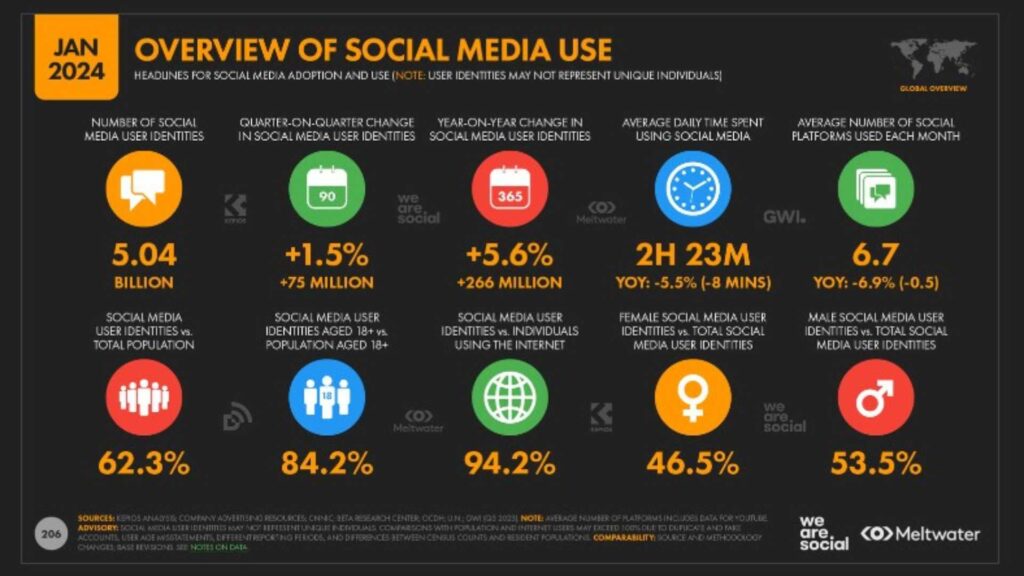

Use a tagging strategy to boost social media interactions. Consistently use hashtags that align with current trends and topics. This encourages people to interact with your content and boosts content visibility.
You can also use tags to monitor brand mentions of your products or your industry. This allows you to engage with your audience promptly.
Consider virtual social media assistants to streamline your tagging strategy. These AI-driven tools can suggest relevant hashtags, track mentions, and automate responses. Implementing them can save time and resources while ensuring consistent engagement across your socials.
Build a Personal Brand on LinkedIn
LinkedIn is the world’s largest professional networking platform, with over 1 billion members across 200 nations. It offers excellent opportunities for individuals and businesses to build and nurture their brands.
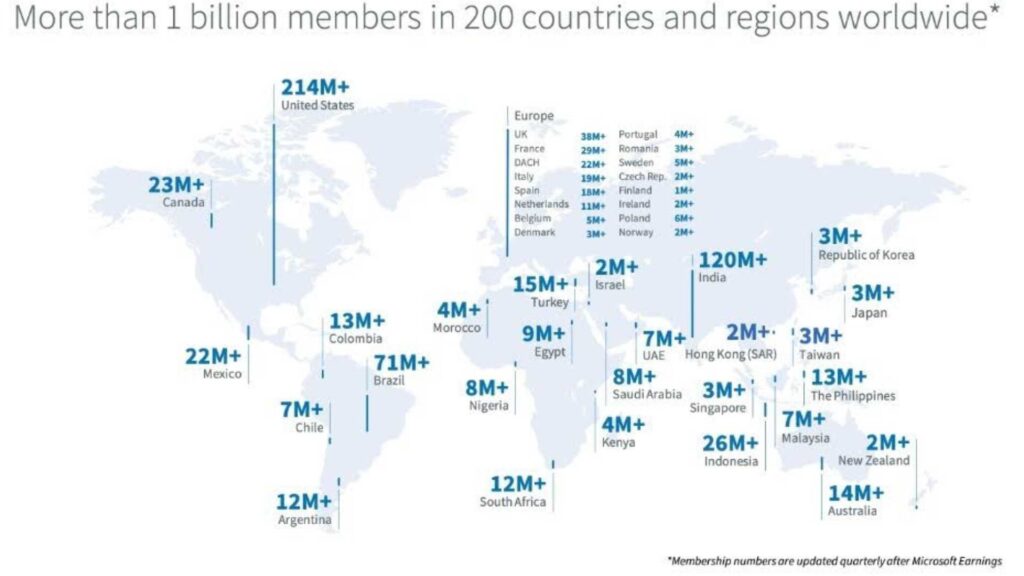

However, simply creating a professional profile isn’t enough to build a personal brand on LinkedIn.
Use various tags to increase your visibility, establish thought leadership, showcase expertise, and attract the right connections. For instance, use skill tags to showcase your expertise and industry tags to attract connections and opportunities within your industry. Use certification tags to help showcase your expertise and credibility to potential employers or clients.
Facilitate Customer Segmentation and Personalization
Personalization matters—more so in today’s data-driven world. In fact, 65% of consumers expect your brand to adapt to their changing preferences and needs.
To meet this expectation, consider using a tagging strategy.
Segment your customers based on shared characteristics, such as demographics, interests, purchase history, cart abandonment, and behavior.
Here’s a summary of the steps to customer segmentation.


With your customer segments ready, use tags to tailor your marketing messages and offerings to specific segments. Imagine sending targeted email campaigns based on what your customers need. That’s the power of segmentation and tagging in action!
Enhance SEO and Content Discoverability
Tagging content can have a profound impact on search engine optimization (SEO) and content discoverability. When users search for specific topics or products, well-tagged content is more likely to appear in search results, driving organic traffic to your website.
Additionally, tags can help you analyze the most popular topics with your readers. Then, the results of this analysis can help you adjust your content strategies accordingly.
And get this— certain AI tools can help analyze your content and suggest relevant tags and keywords. Using these tools in addition to a tagging strategy can help optimize your SEO strategies and boost content discoverability.
Partner with the Right Influencers
Influencer marketing has become a go-to marketing approach for modern brands. Recent stats show that 85% of marketers and business owners believe influencer marketing is an effective marketing strategy.
But how do you find the perfect influencer for your campaign?
Utilize tags to identify influencers who are relevant to your niche. Beyond this, find influencers who align with your brand values and target audience.
Additionally, look for influencers who use hashtags that are relevant to your campaigns. For instance, fashion influencer Chiara Ferragni uses #adv (advertising) and #ghd (good hair day) hashtags in this campaign.


Monitor industry-specific hashtags and mentions to discover influential voices and build profitable relationships with them.
Track Hashtag Performance
Tracking your hashtag performance helps you understand your campaigns’ engagement, reach, and effectiveness.
To achieve this goal, assign special hashtags to each marketing project. This helps you see which hashtags generate the most engagement and reach, enabling you to refine your tagging strategy.
Here’s an example of a hashtag performance report for the #SuperBowl2024.


This curated list of hashtag generators by Attrock discusses the top tools for your consideration. You can analyze each and choose the one that best fits your needs.
Categorize Content Accordingly
The human attention span is shrinking. The last thing you want is for your audience to have difficulty in finding or navigating your content, get frustrated, and bounce.
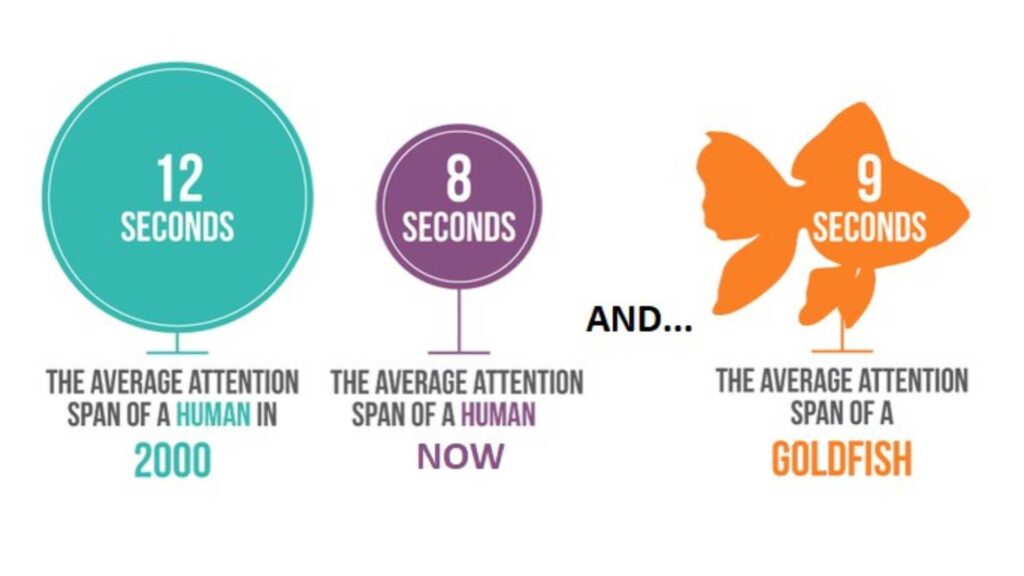

Untagged content can be difficult to navigate and manage. As any marketer knows, content is important in digital marketing campaigns.
To categorize your content, identify the main categories by topics, themes, campaigns, target audiences, or product lines. Then, assign relevant tags based on the categories you’ve identified. After that, implement a consistent tagging strategy for existing and new content.
Organizing your content using tags can also help streamline your content management workflow. Most importantly, readers can easily find the content they’re looking for, thereby boosting overall user experience, engagement, and conversions.
Boost Your Email Marketing Strategy
Email marketing remains a powerful marketing tool in today’s digital world. It’s also another area where brands use a tagging strategy to directly reach their target audience.
Use tags to segment your email list and personalize your marketing messages. Then, you can send targeted emails based on factors like purchase history, interests, and demographics.
Personalization can significantly improve open rates, CTRs, and overall engagement and conversion rates. It’s a simple yet impactful strategy to make your email marketing strategy more effective.
Plus, you can use tags to track how well your emails perform with each group. This helps you understand what content resonates best with your audience and provides insight on how to improve your emails going forward.
Enhance Analytics and Reporting
Every marketer appreciates the immense value of data. For brands using tagging strategies, tags are powerful tools for gathering valuable data.
Analyze how users interact with your tagged content. See which tags generate the most clicks, shares, conversions, and other forms of engagement. Gain insight into audience preferences and campaign effectiveness.
This granular data about your marketing efforts allow you to make data-driven decisions, allocate resources effectively, and refine your marketing strategies.
Final Thoughts
There isn’t a single correct way for brands to use a tagging strategy in marketing. You can use a tagging strategy however you see fit. However, the bottom line is that this strategy offers you a simple yet powerful way to create attention-grabbing and unique marketing campaigns.
Fortunately, tagging strategies are useful across various marketing initiatives, from social media and email marketing to SEO and more.
So, if you’re ready to elevate your marketing campaign, build a strong brand presence, and stand out among the competition, consider employing effective tagging strategies today.
MARKETING
Tinuiti Recognized in Forrester Report for Media Management Excellence

Tinuiti, the largest independent full-funnel performance marketing agency, has been included in a recent Forrester Research report titled, “The Media Management Services Landscape, Q2 2024.” In an overview of 37 notable providers, this comprehensive report focuses on the value B2C marketing leaders can expect from a media management service provider, and analyzes key factors to consider when looking for a media management partner such as size and business scenarios. B2C marketing executives rely on media management services to:
- Augment the efficacy of media investments
- Bridge media impressions to commerce transactions
- Enhance ad campaigns to drive performance
Report authors, VP, Principal Analyst Jay Pattisall and Senior Analyst Nikhil Lai call attention to the pressing need for providers to prove their value, deliver profitable ROAS, and drive alignment between CMOs and CFOs and thus liberate strained marketing budgets.
Our Always-On Incrementality tool – which is a part of our patented tech, Bliss Point by Tinuiti – empowers marketers to validate the incrementality of their spend on each ad set, media channel, and marketing tactic so marketers can create stronger, more focused campaigns that get the job done without sacrificing the bottomline.
B2C marketing leaders often seek and expect key business scenarios from media management service providers including media measurement and attribution, data strategy, and marketing mix modeling. MMM’s adaptability to the post-cookie/ post-IDFA world positions it as an essential tool for marketers. As businesses seek to connect the dots, leverage data, and make strategic decisions, MMM is a crucial ally in the dynamic realm of mixed media advertising. Our Rapid Media Mix Modeling sets a new standard in the market with its exceptional speed, precision, and transparency.
According to the Forrester report, “46% of senior B2C marketing and advertising decision-makers say they plan to integrate performance and brand media assignments with a single media agency in the next 12 months…”
In our quest to better understand all revenue-driving aspects of a given campaign, we have started on a process to quantify the impact of Brand Equity, which we believe is one of the largest missing pieces in more accurate and complete measurement.
Learn more about Bliss Point by Tinuiti, our use cases, and our approach to performance and brand equity.
The Landscape report is available online to Forrester customers or for purchase here.
-
SEARCHENGINES6 days ago
Daily Search Forum Recap: April 29, 2024
-

 MARKETING7 days ago
MARKETING7 days agoQuiet Quitting vs. Setting Healthy Boundaries: Where’s The Line?
-
SEARCHENGINES5 days ago
Daily Search Forum Recap: April 30, 2024
-

 MARKETING5 days ago
MARKETING5 days agoHow To Develop a Great Creative Brief and Get On-Target Content
-

 SEO6 days ago
SEO6 days agoGoogle’s John Mueller On Website Recovery After Core Updates
-

 PPC7 days ago
PPC7 days agoHow to Promote Your Digital Marketing Agency: 4 Growth Strategies
-

 SEO5 days ago
SEO5 days agoWhy Big Companies Make Bad Content
-
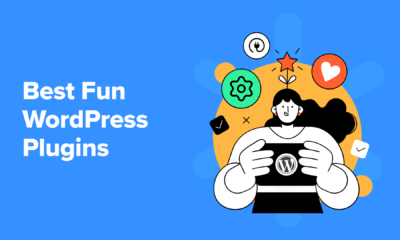
 WORDPRESS5 days ago
WORDPRESS5 days ago13 Best Fun WordPress Plugins You’re Missing Out On









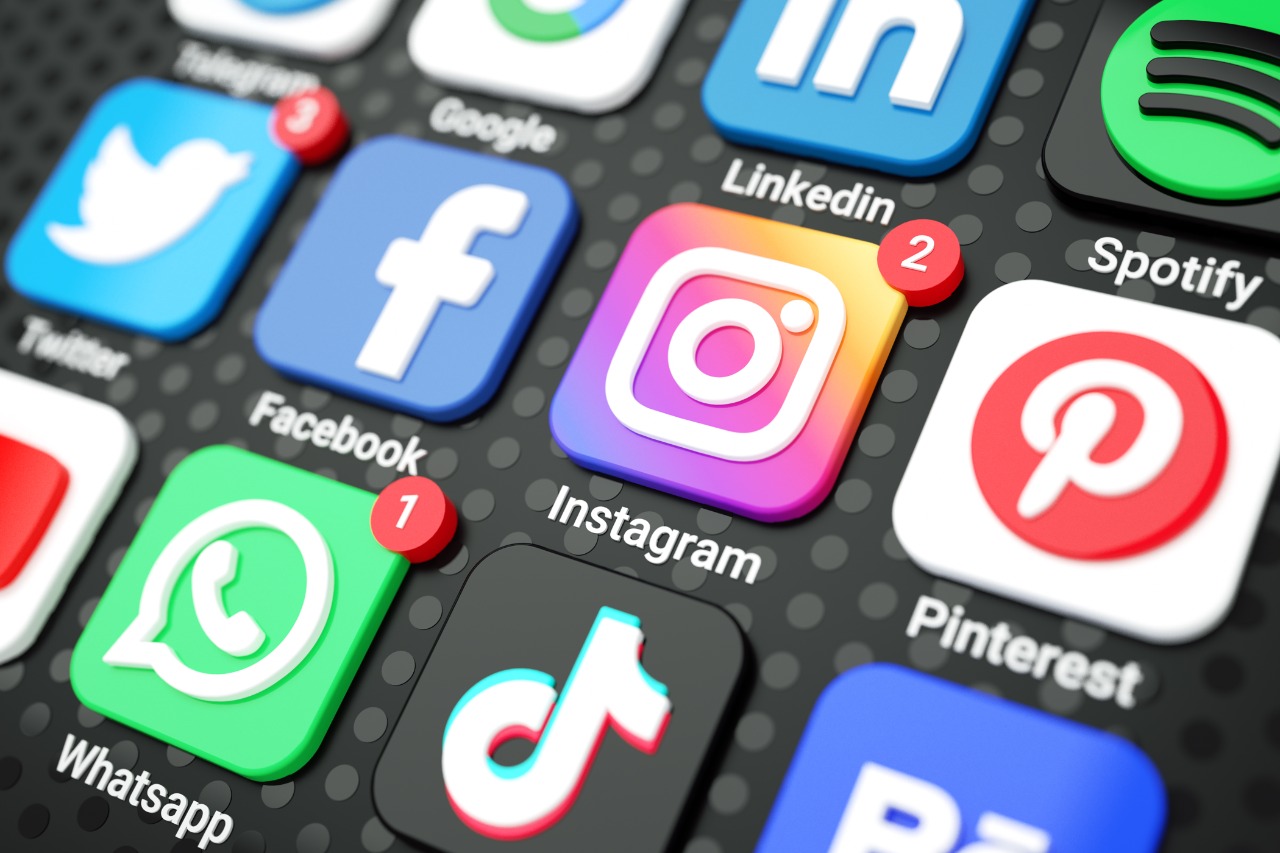



You must be logged in to post a comment Login